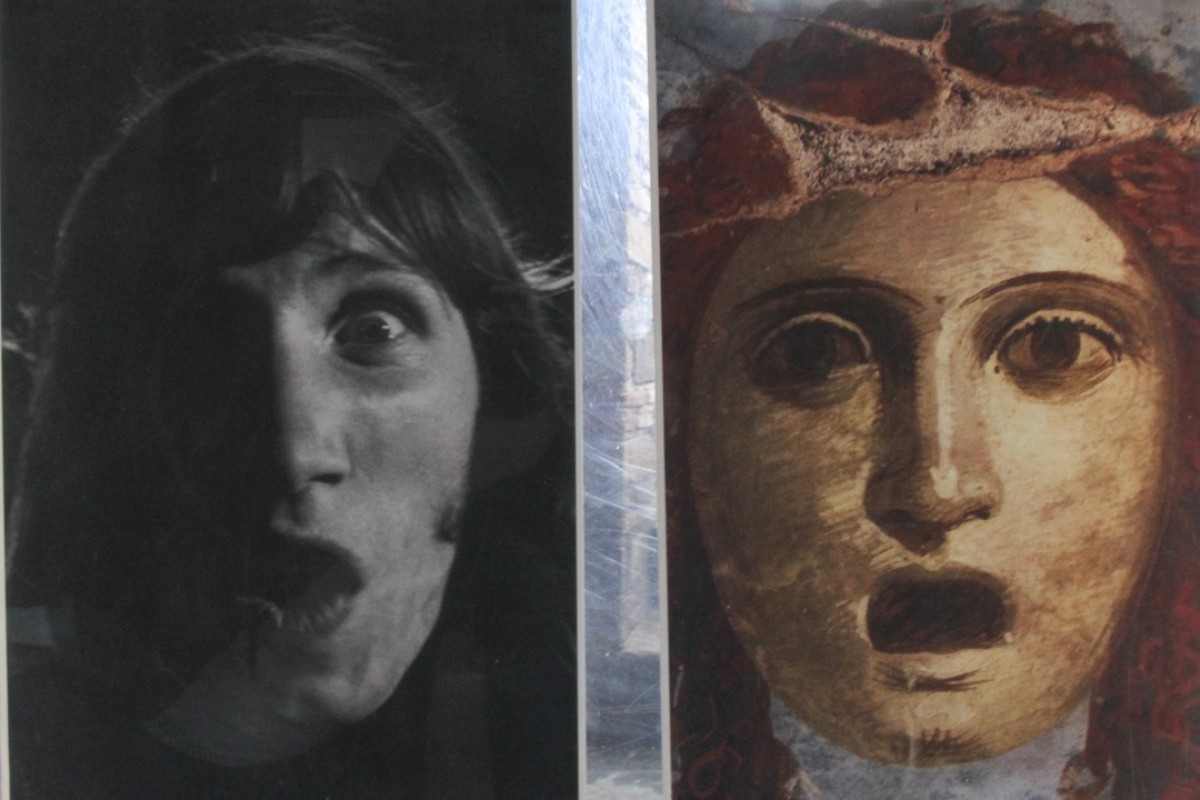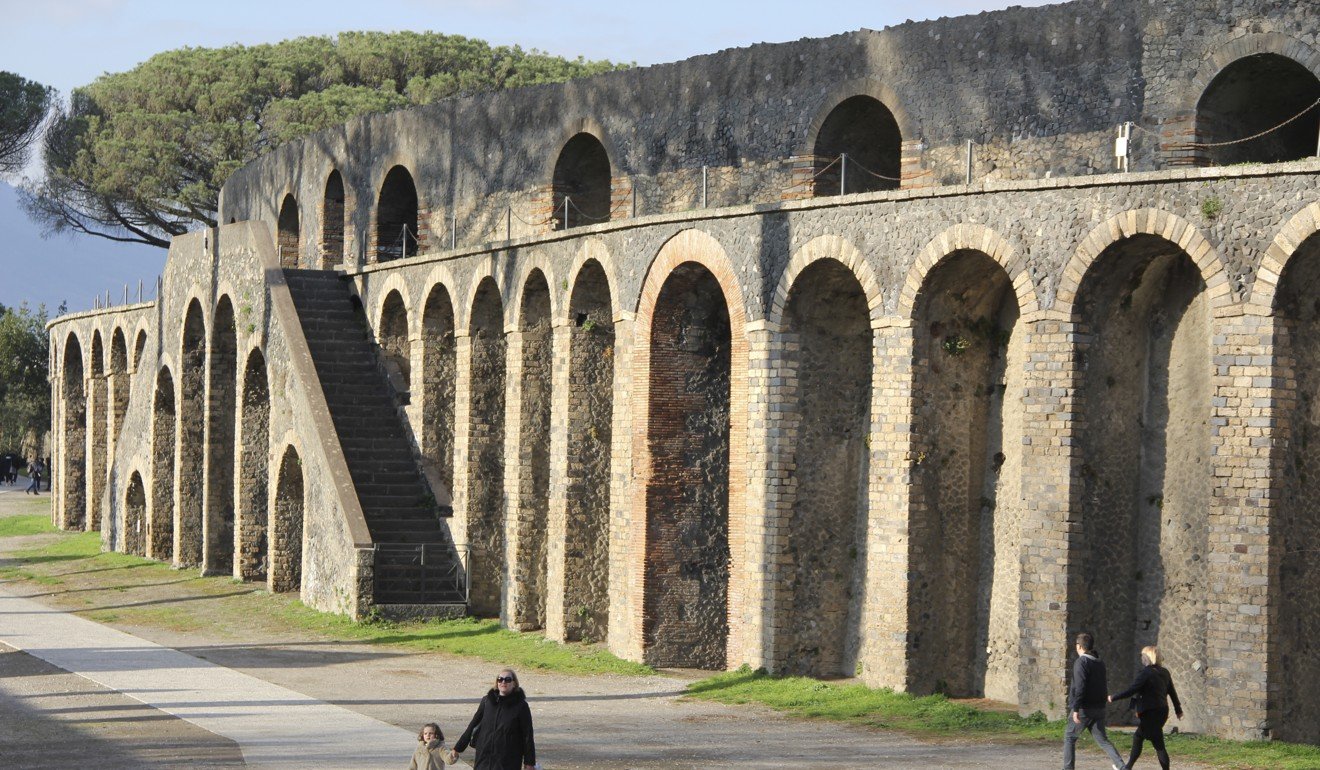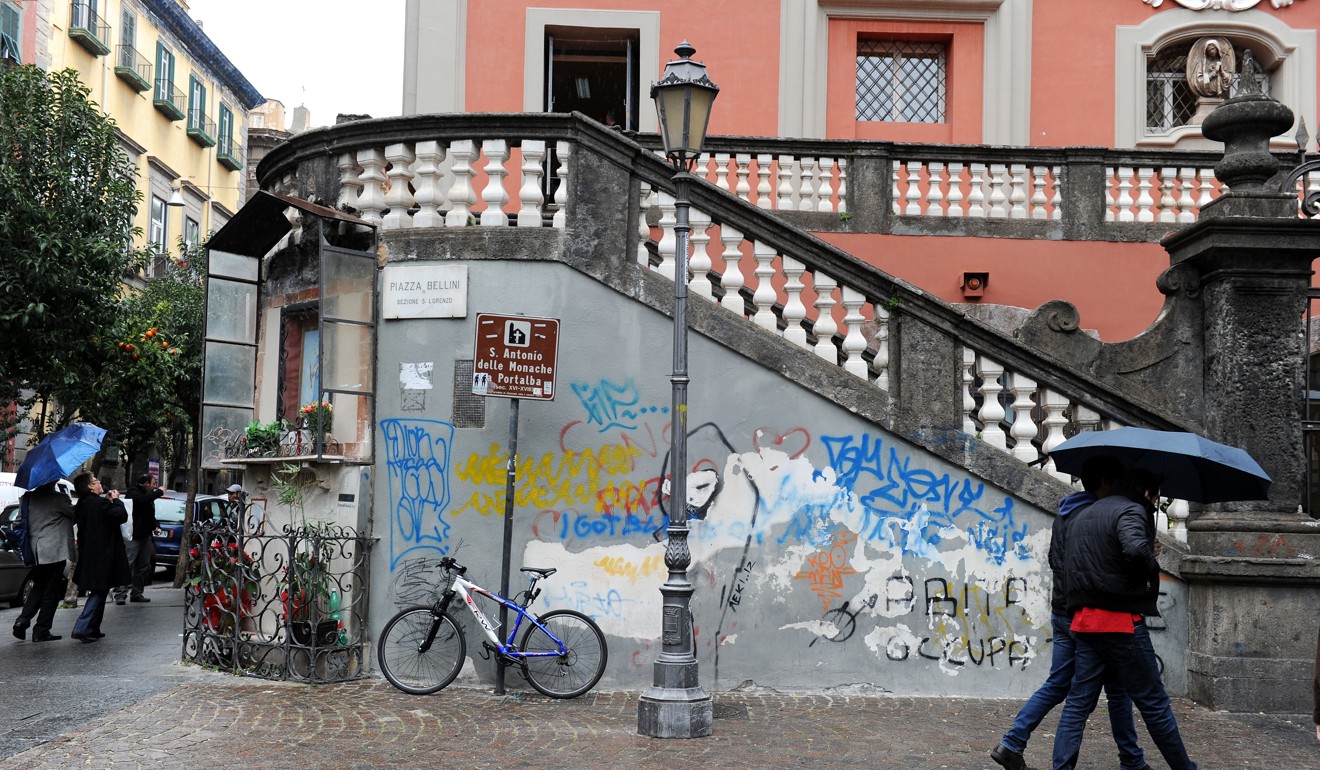
Bouncing off the ancient walls of Pompeii’s amphitheatre, Pink Floyd’s synthesised sonics are as much of a surprise to my fellow tourists as the first deep growl from Mount Vesuvius perhaps was to the city’s inhabitants some 1,900 years ago.
A fan on a bucket-list pilgrimage to the Unesco World Heritage Site, I was well aware of the “Pink Floyd Live at Pompeii Underground” exhibition here, and am pleased to discover the little-known showcase of the band’s iconic 1971 gig comes with audio.

Along the passageways under the amphitheatre’s tiered seating are hung 250 never-before-seen photos and other memorabilia of the band performing in the empty stadium, observed only by the small film crew and French director Adrian Maben, who conceived “rock’s wackiest idea, ever” half a century ago, and who curated the current exhibit. Two large screens play the legendary concert documentary on a loop, and the soundtrack follows visitors along the stone tunnels from a series of speakers, the psychedelic melodies adding to the ethereal atmosphere.
From Pink Floyd to Kanye West, rock music inspires new ballets
The exhibition is not mentioned in the guidebooks and many of my fellow travellers wander in, unaware of what awaits. “Let’s get out of here,” exclaims a child of the noughties to her boyfriend as a version of Seamus, from the band’s seminal album Meddle (1971) and renamed Mademoiselle Nobs for Pompeii, strikes up. Keyboardist Richard Wright holds a microphone to the mouth of his Afghan hound, named Nobs, which duly howls like a tortured banshee at David Gilmour’s harmonica playing; there’s no denying some early Pink Floyd numbers are not for the faint-hearted or appreciated by those prone to tinnitus.
It’s a 40-minute hike to the amphitheatre from Pompeii’s main entrance, down the main Via Dell’Abbondanza thoroughfare, past the doorways of lavish, mosaic-filled villas, shops, bars and brothels, forums, temples, theatres, gardens and vineyards, all unearthed during the world’s biggest archaeological dig, which began in 1748.
I find the amphitheatre in much better shape than it appears in Maben’s 47-year-old film. Instead of untamed weeds and mounds of volcanic ash and pumice, the arena is now neatly manicured, white gravel crunching satisfyingly underfoot.
Sitting with my back against an ancient wall, eating my lunch with the spring sun on my face and Mount Vesuvius’ summit looming up over the north stand, the trippy A Saucerful of Secrets wafts out of the southern entrance, followed by Careful With That Axe, Eugene. I wander back in to see a small crowd gathered around one of the screens, watching drummer Nick Mason in the zone, his long hair blowing in the breeze of a Campanian summer night, bashing away to One of These Days I am Going to Cut You into Little Pieces: what was to become one of his and rock music’s most celebrated drum solos.
Love affair with Italy blossoms into multilingual musical performance for Hong Kong jazz singer
With respects paid to the rock gods, I venture back into the city’s centre. So vast is Pompeii that on the sunny February day of my visit, I have entire streets to myself. I hop from one side of the street to the other, making good use of the large stepping stones that allowed Pompeiians to cross without a foot dunking into the mire – the roads having doubled as the drainage and sewage systems.

At the time of the eruption, on August 24, AD79, Pompeii had been a prosperous and attractive place to live and visit; tourists from the Eternal City, Rome, a 225km chariot ride to the north, flocked to the pastoral and fertile setting near the Amalfi Coast, flanked by the verdant Sarno river valley and in the shadow of the Lattari Mountains and, of course, Vesuvius. The Roman empire was enjoying its Pax Romana period – a time of relative peace and stability – with most of continental Europe, North Africa and much of Britain conquered and the barbarians either slain, on the run or plotting revolt.
‘I saw hell break out’: centuries old buildings demolished as powerful quake strikes central Italy
Before all hell broke loose, Pompeiians lived pretty ordinary lives: they worked and partook in leisure, they raised families, indulged in home makeovers, revamped the garden, headed to the gym for a sauna and a bath, visited the theatre, threw parties with free-flowing wine and indulged in civic life.
Details of everyday life in the first century AD were preserved beneath Vesuvius’ ash, including politically charged and often bawdy graffiti.
In the shadow of Mount Vesuvius
With the sun setting, sirens ring out across Pompeii to tell tourists the city is about to shut for the night. Mount Vesuvius stands as serene and implacable as always.
Aboard the packed train to Naples’ central station, which leaves from just outside the main entrance to the once entombed city, I am forced to stand with my face inches from the window of the sliding doors as commuters pour on at each station, mingling cheek by jowl with us tourists. The tinny acoustics of the train carriage jar as the international voices rise to an excited babble, so I turn to Spotify and again zone in to Live at Pompeii as the sun’s red disc sinks into the Bay of Naples and the graffitied suburbs roll by. Mentally, I rename one of the songs, Careful With That Spray Can, Maximus.
The “Pink Floyd Live at Pompeii Underground” exhibition will be on display until at least September.









